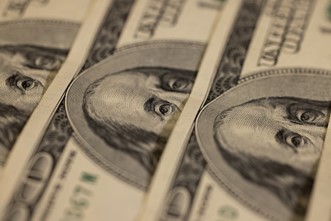
The Federal Reserve Open Market Committee has decided to increase the “Fed funds rate” for the 11th time since March 2022. With an additional 0.25%, the new rate now falls within 5.25% to 5.50% as a means to address a looming recession.
Economic Growth and Recession
Fortunately, Kevin Canterbury of Redstone Capital Management reports that the economy is doing well, with a 2% growth in Gross Domestic Product in the first quarter of 2023. However, for the second quarter, predictions say it will end up a tad lower, hovering between 1.5% and 2%.
According to the International Monetary Fund, 2022’s economic growth is projected to be at 2.1%, going down slightly in 2023 to 1.8%, and dropping further to a projected 1% in 2024.
Inflation and its Effects
As expected with the rapid rate hikes, inflation has been slowing down. Consumer prices used to go up at a rate of 3% for headline and 4.8% for core. However, the prices of homes and related expenses are decreasing slower than desired.
Overall, while inflation is still in progress, it’s not as extreme as experts have projected.
Although the experts over at the Federal Reserve are still unsure of what the optimal inflation level is, it’s clear that they’re shooting for a number lower than 3%. If true, and if things don’t get derailed, the 3% target might come to fruition by 2024.
Jobs and Employment
The job market has gone through the proverbial wringer since the pandemic.
Businesses shut down, then reopened in the midst of a labor shortage. Things have mostly normalized since then, but some industries are still struggling to get enough manpower.
Despite the current situation, the unemployment rate is still low at 3.6%. It seems businesses are chugging along, holding on to the skilled workers that they have, which is a good sign that the economy is weathering the storm.
The Fed’s Decisions and Their Impact
In June, the Federal Reserve decided to take a break and let conditions ‘catch up.’ The Fed elaborates on their conservative approach by reminding dissidents that rate hikes have only been at 4% since December, and it takes time (about 1 to 2 years) for the economy to start showing cracks.
Allowing these conditions to ‘catch up’ reduces the risk of overcorrection. The Fed acknowledges that rate hikes are a hammer, not a scalpel, and that their current situation calls for a little more finesse.

Financial Markets and Interest Rates
As for financial markets, they’re celebrating that interest rates are unlikely to get higher. Businesses and real estate companies took advantage of the low interest rates, so now they’re in a good spot until loans/bonds come due and interest rates are still high. Though that isn’t really a big concern since maturities are spread over time rather than being lump sums that need refinancing.
Concurrently, bond defaults and bankruptcies are on the rise, putting pressure on the financial system. This is accompanied by people with low-interest mortgages refusing to move, bottlenecking the market for potential buyers.
Economic Cycles and Outcomes
When needing to choose between inflation or recession, the right choice is a balancing act of staying in the middle–that is the Fed’s goal.
So far, so good.

